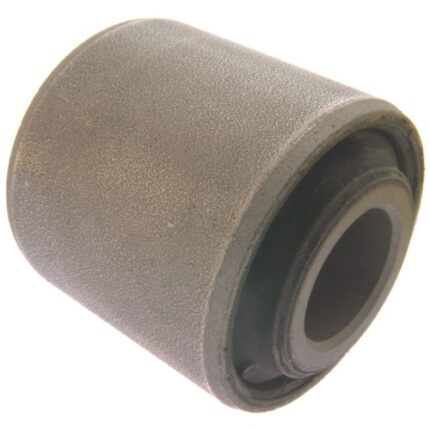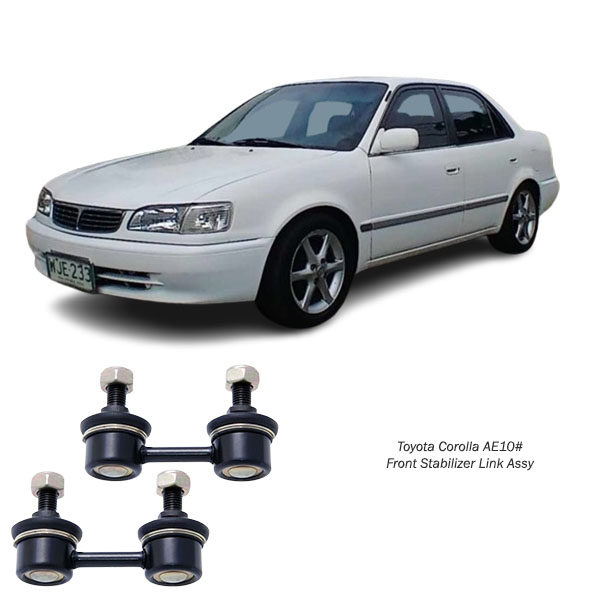-14%
Get Toyota Corolla AE10# Front Stabilizer Link Assy 0123-010 in Kenya
The Front Stabilizer Link Assembly, also known as the sway bar link or sway bar end link, is a crucial component of a vehicle’s suspension system. It connects the stabilizer bar (also called sway bar or anti-roll bar) to the control arm or strut of the vehicle’s suspension.
Benefits;
1. Improved Stability and Control:
- Reduces Body Roll: The stabilizer bar link helps to minimize body roll or sway during cornering and sudden maneuvers by transferring forces from one side of the suspension to the other.
- Enhances Handling: By providing additional lateral stability, the stabilizer bar link improves overall handling and responsiveness, especially during aggressive driving or evasive maneuvers.
2. Enhanced Safety:
- Reduces Risk of Rollover: By reducing body roll and improving stability, the stabilizer bar link assembly helps to mitigate the risk of rollovers, particularly during sharp turns or emergency maneuvers.
- Improved Traction: Enhanced stability and control provided by the stabilizer bar link contribute to better traction and grip, especially in slippery or uneven road conditions.
3. Minimizes Vibrations and Noise:
- Absorbs Road Vibrations: The stabilizer bar link assembly helps to absorb and dampen road vibrations and impacts, resulting in a smoother and more comfortable ride for occupants.
- Reduces Suspension Noise: By providing additional support and stability to the suspension system, the stabilizer bar link helps to minimize noise and rattling from the front suspension components.
4. Even Tire Wear:
- Maintains Proper Wheel Alignment: By reducing body roll and stabilizing the vehicle’s chassis, the stabilizer bar link assembly helps to maintain proper wheel alignment, resulting in more even tire wear and prolonged tire life.
- Prevents Premature Wear: By distributing forces evenly across the suspension system, the stabilizer bar link assembly helps to prevent premature wear and tear on other suspension components, such as control arms and bushings.
5. Longevity and Durability:
- Constructed from Robust Materials: Stabilizer bar link assemblies are typically made from durable materials such as steel or aluminum alloy, ensuring long-term reliability and performance.
- Resistant to Corrosion: Many stabilizer bar link assemblies are coated or treated to resist corrosion and withstand harsh environmental conditions, prolonging their lifespan.
Signs a car needs a new stabilizer link;
1. Excessive Noise:
- Clunking or Rattling: Worn or damaged stabilizer links can cause clunking or rattling noises, especially when driving over bumps, potholes, or uneven road surfaces. This indicates that the links are loose or have worn-out bushings or ball joints.
2. Increased Body Roll:
- Excessive Body Lean: If you notice increased body roll or sway when cornering, it could indicate a problem with the front stabilizer link assembly. The vehicle may feel less stable and more prone to leaning to one side during turns.
3. Steering Issues:
- Loose or Vague Steering: Worn or damaged stabilizer links can affect steering responsiveness, leading to a loose or vague steering feel. You may notice that the vehicle feels less connected to the road and requires more effort to steer.
4. Uneven Tire Wear:
- Inner or Outer Tire Wear: Worn or damaged stabilizer links can lead to uneven tire wear, particularly on the front tires. Look for signs of excessive wear on the inner or outer edges of the tire tread.
5. Visual Inspection:
- Visible Damage or Wear: Inspect the front stabilizer link assembly visually for signs of damage, such as bent or broken links, worn-out bushings, or loose ball joints. Pay close attention to the condition of the bushings and ball joints, as they are common failure points.
6. Suspension Noise:
- Squeaking or Creaking: If you hear squeaking or creaking noises coming from the front suspension when driving or going over bumps, it could indicate worn stabilizer link bushings or ball joints.
7. Vehicle Swaying:
- Excessive Swaying: Excessive swaying or body roll, particularly during cornering or sudden maneuvers, can be a sign of worn or damaged stabilizer links.
8. Vehicle Age and Mileage:
- High Mileage: Stabilizer links typically wear out over time, especially in older vehicles or those with high mileage. If your vehicle falls into this category and you’re experiencing any of the above signs, it’s a good idea to inspect the stabilizer links for wear.
Follow us on Facebook for more parts.



